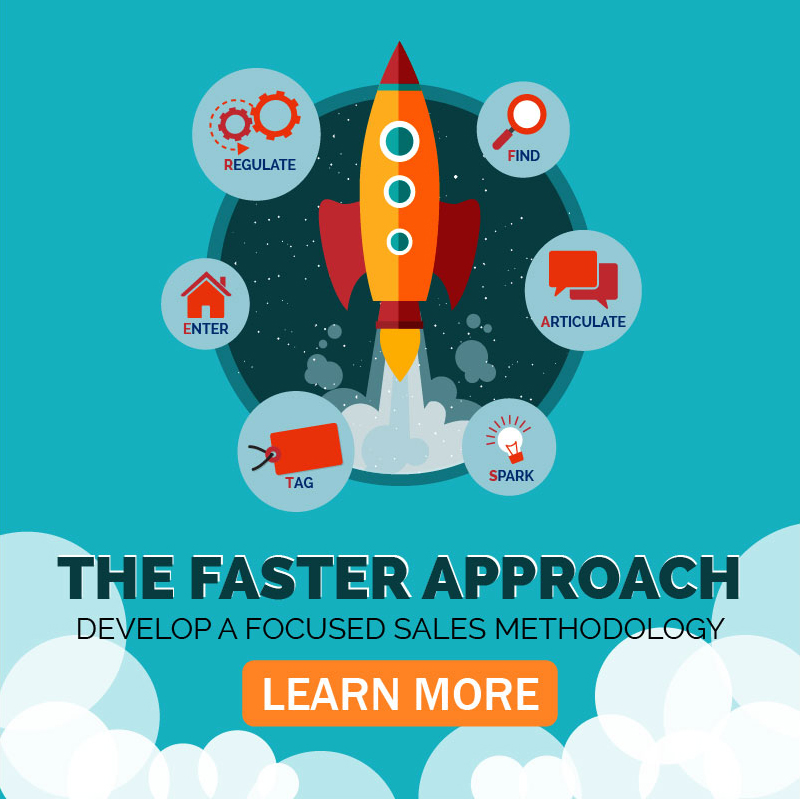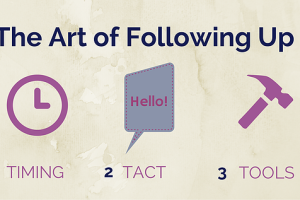This is the fourth of a series of seven posts on the importance of bringing a focused methodology to the madness that is the sales environment. We have already examined the importance of “finding the need” and the craft of “articulating the solution”, so today, we’ll be looking at the third part of our acronym, the letter “S”
At this point we’ve discovered our prospect’s genuinely felt needs. The customer has an answer to the question, “Why buy anything?” They’ve also got a pretty good feeling that they should buy from us because we’ve demonstrated unique value. But then come those dreadful words: “I need to think about it first.”
Procrastination is one of most common reasons why initially promising deals fail to materialize, which is why good salespeople must know when to intervene in order to prevent a customer from putting off the implementation of a viable, mutually beneficial solution.
We have to look for opportunities to “spark a fire” and generate that sense of urgency in our customers that compels them to buy now rather than later.
Here are a few pointers for us to keep in mind as we do:
Amplify the pain.
We’re at a stage in the sales process where customers have already begun to see clearly how our product offerings could make life much easier for their organizations. But as we begin approaching the cost issue in our discussion, it’s possible that customers will forget just how painful the problem actually is in the first place.
Some people are naturally inclined to continue living with their current pain, since it’s at least familiar to them, rather than undertake new short-term costs that might alleviate that pain over the long run.
In such situations, salespeople do well to revisit the original impetus for the solution and help customers better appreciate the unnecessary pain they will face if they choose to put off a viable solution. According to a SearchLogix Group whitepaper, “That is how you nail the sale. If you’ve demonstrated how you can satisfy [their] need, but the customer still is reluctant to buy today (or wants to think about it, or sleep on it, or get back with you in a month or two, or whatever), then you can push their pain button.”
When we amplify the pain side of the equation, we can help stimulate a compelling event that requires action precisely because the consequences of inaction outweigh the benefits of postponing the purchase.
To be clear though, we’re not talking about creating compelling events.
These cannot be manufactured, because either there’s already an exigent need for our solution, or else we’re merely pitching a “nice-to-have-but-not-strictly-necessary” product. That’s for us to figure out as we’re “finding the need” and “articulating the solution.”
Nevertheless, we need to be able to recognize when our customers may be overlooking or inaccurately perceiving the gravity of their problems. In those cases, we can stimulate a compelling event for the customer simply by drawing appropriate attention to the quantifiable impact of a problem, thereby attaching economic figures to the benefits of our proposed solution
4 factors we can use to assess whether a compelling event exists for our customers:
– Internal organizational pressure
– External pressure from third-parties, such as shareholders and regulatory agencies
– Personal impact for the decision-makers and their employees
– The consequences of inaction
At this point in the sales process we’re probably already taking care of #3 pretty well, but personal impact may not be enough to prompt action unless one of the other three factors in the list is brought into play alongside it. Personal impact combined with organizational pressure or an acute consequence of inaction is a sure recipe for urgency.
In order to highlight the consequences of inaction, however, we’ll have to find meaningful ways to quantify the scenario for our customers. One of the things we can do at this stage is learn more about their specific financial and productivity goals so that we can place the costs of implementing our solutions alongside estimates—or, preferably, real-time statistics—of what inaction is already costing them (or soon will cost them).
“Organizations frequently take action based on a risk/reward analysis,” Lee Levitt.
He makes a crucial distinction between the “technical owners” and the “economic owners” of business problems. Technical owners are most directly involved in implementing a solution, and so they are probably the ones that a salesperson has the most contact with in bringing a suitable product offering to the table.
But they may not be the only ones the salesperson needs to connect with in order to stimulate the organization to act.
“A compelling event has an economic owner, a defined date, and is a direct response to a business pressure,” he says. “If that economic owner has chosen to address the issue, he or she will have a project plan with milestones and actions.”
As salespeople, we have to seek these economic owners out so that we can demonstrate a “hard figures” portrait of urgency in terms of return-on-investment (ROI) or total-cost-of-ownership (TCO).
We have to be willing to do this legwork on behalf of the technical owners of our solutions because they may lack the motivation or resources to do it on their own, and such figures might forcefully expedite purchasing decisions. It’s our job to make their job easier to buy us.
Amplify the value.
Drawing attention to a customer’s pain is only one side of the equation, though.
On the positive side of things, we can add value to the deal for the customer, thereby tipping the scales in our favor with a prospect who otherwise remains “on the fence” about the decision. We can do this either by reducing the overall cost to the customer or by bundling more into the transaction to increase the value at full cost.
But before we attempt to do these things, we need to make sure we’ve already established a compelling case for the basic desirability of the solution itself.
Important distinction coming: Most discussions of urgency focus on something I call ‘offer urgency’; a sale, a promotion, a discount, a ‘today only’ offer. While effective, all of these should be used as secondary sources of urgency, and only after a primary sale urgency is created. Primary sales urgency is created by the need or wants to own the product based on how that product will benefit the customer.
In other words, discounts and limited-time bundling offers are reduced to gimmicky sales tactics when the customer hasn’t already been sold on the solution itself.
If it takes a great deal for a customer to even show interest, we’re probably looking at a poor pain-solution alignment in the first place, and that’s a precarious place to be. In all honesty, I’m not a big fan of reducing price for the sake of reducing price. If someone is only buying something from me because it’s cheap, then they’re really not an ideal customer.
We shouldn’t overcharge, of course, but dropping the price does little more than cheapen the product, and so the wiser approach is to bundle more value into the deal. AND WHY…. Because People want value and they’re willing to pay for it because they know it’s what enables us to keep working our tail off.
We should refrain from lowering our price through discounts—even time-sensitive discounts—unless other options are ineffective. There are always added benefits we can toss in—things like free delivery, extended service periods, or complementary products at reduced rates—without having to lower the full price on the main solution itself.
These add-ons communicate a message of, “We know you like our solution, and we know that you’re ready to act. Let us make it a no-brainer for you.”
It’s not that discounts are never appropriate, of course. But when we use them, they should represent legitimate business propositions where the customer choosing to act now results in tangible savings for our bottom line as well—things like fewer costs for in-person calls to the customer’s office, more time to spend pursuing new business rather than courting prospects who are still waiting to decide, etc. In other words, the discounts should pay for themselves, and there should be a definite time limit that we stick to. It may be tempting to offer short-term discounts to a customer who waits till after the promotional period to decide to act, but if we’re not careful, we’ll risk cheapening the value of our product as a whole by communicating the message that we were overpriced to begin with.
As this Printwand feature succinctly puts it, “If a product is always on sale, it rather defeats the purpose of creating a sense of urgency.”
Be provocative, if necessary.
Sometimes a customer accurately perceives both the value of a solution and the unnecessary costs of delaying implementation, but they’re still reluctant to pull the trigger. For whatever reason, they’re too content with the status quo, fearing the unforeseen (and largely baseless) consequences of organizational change in the wake of implementation. Change is always frightening, of course, even when it comes to solving a major business problem.
Though they might not admit it openly, by their reluctance to act some especially change-resistant customers demonstrate that they would rather continue dealing with the enemy they know than risk meeting a new one around the corner.
As salespeople, we may occasionally have to play the role of interventionist, prompting our customers to rethink their current assumptions and boldly face unpleasant realities.
If the sense of urgency doesn’t exist, we may need to challenge the prospect on what other initiatives are more important. You may even need to switch over to a provocative sales approach if you think the prospect is focused on the wrong priorities.
Pointed, deliberate questioning can be highly effective in exposing flawed thinking and myopic perspectives.
“Are there other problems that are a bigger priority than this one right now?” “Can your company afford to sustain this kind of inefficiency?” “What aspect of making this change are you most intimidated by right now?” These kinds of questions probe for the deeply psychological roots of our customers’ inaction, helping us better ascertain whether the deal has a future or not. It’s difficult to ask them, though.
Provocative questions sometimes push, prick, and make people uncomfortable to the point where they fear the possible backlash or how to handle it reversed on them. These are questions that get to the ‘why’ and the core philosophy of how they make decisions and where their comfort level with risk is, to get a better understanding of how someone really thinks.
Provocative selling is never fun, but let’s remember that we’re not out to manipulate someone into buying something they don’t really need or want.
We’ve already demonstrated that our product has real value for the customer, and the customer agrees. All we’re doing when we “spark a fire” is taking the initiative in helping customers realize how delaying their purchase decision will unnecessarily defer the benefits of solving their problems. It’s not about high pressure tactics; it’s about doing the right thing for our customers’ sake.
As Copyblogger founder Brian Clark says, “Don’t run them off by being stupid…help them to make the move they likely already want to take.”
Of course, there are other things that can hold up a deal, even when there is already a good sense of urgency about the solution. This is why it’s so important for salespeople to know who their champions are within their customers’ organizations, so they can “tag them in” when it’s time to move the sales process further along the decision-making pipeline. We’ll talk more about identifying and leveraging our customer advocates next time.








